#Agritecture
Explore tagged Tumblr posts
Photo

(via GVG Estudio – a f a s i a)
1 note
·
View note
Text
Cornell Launches CEA Works to Train the Next Generation of CEA Professionals
Key Takeaways CEA Works, a new online education platform from Cornell’s GLASE Consortium, launches June 1, 2025. Funded by USDA NIFA, the program targets upskilling for Assistant Growers, Head Growers, and Operations Managers. The first four self-paced courses are developed by experts from Cornell, Ohio State, SUNY Broome, and Agritecture. Pricing starts at $60 per course, with a $500 bundle…
0 notes
Text
Global Controlled Environment Agriculture Census 2024 — AGRITECTURE
The 3rd annual CEA Census, produced by Agritecture & WayBeyond, spotlights greenwashing, future production, and sustainability metrics. This report showcases how growers measure specific ESG outcomes, and what their perspectives are on sustainability. Source link
0 notes
Text
From the Sky to the Field: How Drones are Transforming Farming Practices
"Drone technology is revolutionizing agriculture by providing farmers with real-time data and imagery, enabling them to make informed decisions about crop management, irrigation, and pest control. This level of precision helps to optimize yields and reduce resource use, ultimately leading to more sustainable farming practices."
Henry Gordon-Smith, CEO of Agritecture, on the use of drones in agriculture:
Introduction
Drones have revolutionized various industries, and agriculture is no exception. Drone farming represents the cutting edge of agricultural technology, promising efficiency, precision, and sustainability. The agricultural drone market is expected to grow from $1.2 billion in 2019 to $4.8 billion by 2024.
From scouting to security, drones are becoming common on both large and small farms. In many areas, drone use is already essential for large-scale precision farming operations. Data collected by drones help farmers optimize planting and treatments, potentially increasing yields by up to 5%. This blog explores the benefits, applications, challenges, and future prospects of drone farming, highlighting its transformative impact on modern agriculture.

What is Drone Farming?
Definition: Drone farming, or UAV (Unmanned Aerial Vehicle) farming, involves the use of drones to perform agricultural tasks such as monitoring crops, spraying pesticides, and analyzing soil.
Historical Context: Initially used for military and recreational purposes, drones have found significant applications in agriculture over the past decade, driven by advancements in technology and the need for precision farming.
Benefits of Drone Farming
Increased Efficiency: Drones can cover large fields quickly, performing tasks like spraying and monitoring in a fraction of the time it takes using traditional methods.
Precision Agriculture: By using sensors and GPS technology, drones can apply fertilizers and pesticides with pinpoint accuracy, reducing waste and environmental impact .
Cost Reduction: Although the initial investment in drone technology can be high, the long-term savings from reduced labour and input costs can be substantial.
Environmental Impact: Drones help reduce the overuse of chemicals and water, contributing to more sustainable farming practices .
Applications of Drones in Agriculture
Crop Monitoring: Drones equipped with multispectral and thermal sensors can monitor crop health, detect disease, and assess plant growth .
Soil and Field Analysis: Before planting, drones can create detailed 3D maps to analyze soil health, moisture levels, and nutrient distribution, aiding in better planning and resource management .
Planting: Some drones can plant seeds by shooting them into the soil with compressed air, which is especially useful in difficult-to-reach or hazardous areas .
Spraying: Drones can spray pesticides and fertilizers more evenly and precisely than traditional methods, reducing the amount of chemicals needed and minimizing human exposure to harmful substances .
Irrigation Management: By identifying areas of the field that are too dry or too wet, drones help farmers optimize irrigation and conserve water .
Sensor Technologies in Agricultural Drones
Agricultural drones are equipped with advanced sensor technologies that revolutionize farming practices. These sensors provide detailed insights into crop health, soil conditions, and more. Here are some key sensor technologies used in agricultural drones:
RGB Cameras: Capture high-resolution images for detailed crop analysis.
Multispectral Cameras: Is used to detect Nutrient deficiencies and early signs of disease.
Thermal Cameras:
Detects heat to identify plant stress and pests.
LiDAR: Create 3D terrain maps for topographical analysis.
GPS: Enables autonomous flight, accurate mapping, and issue identification.
Real-World ExamplesCase Studies:
Case Study: Enhancing Agricultural Efficiency with Krishi
Background
Modern agriculture increasingly relies on technological advancements to improve productivity and sustainability. One such innovation is the use of drones for various farming tasks, including crop management and irrigation.In this case study we will explore the impact of Krishi, a high-efficiency agricultural drone, on a medium-sized farm.
Challenge
Farmers often face the challenge of managing large areas of crops with limited resources and time. Traditional methods of spraying and monitoring can be labour-intensive and time-consuming.
Solution
The introduction of Krishi, an advanced agricultural drone, aimed to address these challenges by offering high efficiency and outstanding capacity.
Implementation
Krishi was deployed on a 50-acre farm to assist with crop management and irrigation tasks. The drone's capabilities were tested over a growing season, focusing on its efficiency and capacity.
Krishi was designed for maximum efficiency, covering 2-3 acres in a single flight. This exceptional capability saved considerable time and improved the overall effectiveness of crop management and irrigation systems. For instance, tasks that would typically take several hours were completed in just a fraction of the time, allowing for more precise and timely interventions.
Krishi's substantial 10-litre capacity enabled extended operation without frequent refills. This feature allowed the drone to cover large areas before requiring additional inputs, significantly enhancing convenience for the farmers. During peak spraying season, the drone managed extensive fields with fewer interruptions, ensuring consistent application of fertilizers and pesticides.
Results
The deployment of Krishi resulted in notable improvements in farm operations:
Increased Efficiency: The time required for crop management tasks was reduced by 60%, allowing farmers to allocate more time to other critical activities.
Higher Yields: The precision and timeliness of interventions led to a 15% increase in crop yields.
Cost Savings: Reduced labour and operational costs due to the drone's efficiency and capacity contributed to overall savings.
Krishi's high efficiency and outstanding capacity demonstrated significant benefits in enhancing agricultural productivity. This case study highlights the potential of advanced agricultural drones to transform farming practices, making them more efficient, cost-effective, and sustainable.
InJapan, drones are used extensively for rice cultivation, where they spray pesticides and monitor crop health . In the United States, large agricultural firms use drones for precision agriculture to improve crop yields and reduce costs .
Innovative Companies:
Companies like DJI, drone ,PrecisionHawk, and AgEagle are at the forefront of developing drone technology for agriculture, offering solutions that range from crop monitoring to automated spraying systems.
Challenges and Limitations
Regulatory Issues: The use of drones in agriculture is subject to strict regulations regarding airspace, privacy, and safety, which can vary significantly between countries .
Technical Limitations: Drones have limited battery life and may face difficulties operating in adverse weather conditions. The complexity of managing and analyzing the vast amounts of data they collect is another challenge .
Cost and Accessibility: The high initial cost of purchasing drones and the need for specialized training to operate them can be barriers for small-scale farmers.
Future Prospects
Technological Advancements: Future advancements in drone technology, such as improved battery life, AI integration, and better sensors, will likely enhance their capabilities and reduce costs .
Global Adoption: As drone technology becomes more affordable and accessible, its adoption is expected to grow globally, potentially transforming agricultural practices and improving food security.
Conclusion
Drone farming offers numerous benefits, from increased efficiency and precision to cost savings and environmental sustainability.The adoption of drone technology in the agriculture sector has the potential to revolutionize the way farmers manage their crops and improve yields. While challenges such as concerns about job displacement and a lack of knowledge and training persist, there are ongoing initiatives to promote the use of this technology and provide support to farmers looking to implement it.Despite challenges, its future looks promising with ongoing technological advancements
Final Thoughts: Embracing drone technology can significantly enhance agricultural productivity and sustainability, making it a vital tool for the future of farming.
ResourcesLinks:
PrecisionHawk: Drone Solutions for Agriculture
DJI Agriculture: Drones for Farming
Key Sessions at AgriNext Awards Conference & Expo
The AgriNext Awards Conference & Expo is not just a platform for showcasing innovations but also a hub for insightful sessions on cutting-edge agricultural technologies. One such noteworthy session is:
Standalone Session 2: 'Drones and Robotics in Precision Agriculture'
Date: 14 November 2024
Time: 12:15 PM - 12:45 PM
Venue: Crowne Plaza Dubai - Festival City
This session will delve into the latest advancements in drone and robotics technology, demonstrating their applications in precision agriculture. It’s a must-attend for anyone interested in understanding the future of farming technology.
0 notes
Photo

Can you bloom a desert with the help of the technology? Thanks to Qatar's harsh desert environment and growing population, researchers have embraced the tiny country as a laboratory to address global concerns. astrophysicists and biologists team together in an innovative project to ensure water and food security for the future. Hot and dry weather conditions and saltwater in the desert, play a key role in developing the facilities/technologies which could be applied in any part of the world to grow vegetation.
Watch the video about the pilot site in the Sahara desert, to understand how technology can help in growing vegetation in a desert, creating an ecosystem on its own.
https://acadru.com/learning-modules/view/vertical-farms-turning-concrete-jungles-into-farmlands
.
.
#verticalfarms#verticalfarming#farmlands#flavourfarmers#farmers#agriculture#agricultural#greenhousefarming#urbanization#agriculturalpractice#precisionfarming#ubertractor#innovationsinfarming#ecocity#microbiologists#foodbiologist#biotechnologists#agritecture#sustainablesolutions#sustainability#farmscrapers#newagefarmers
0 notes
Text
we don't have too many people. we just don't have enough vertical farms with robotic harvesting and cultivation
0 notes
Video
Supersweet on the Rock - Downey, Iowa by Shari
#Downey#Cedar County#Iowa#old#grain#elevator#Supersweet#feeds#Rock#Island#railroad#tracks#Iowa Interstate#farm#country#agriculture#agritecture
1 note
·
View note
Text
Agritecture Market To Grow With Impressive CAGR During the Forecast Period
Environmental concerns are driving the growth in Global Agritecture Market in the forecast period, 2022-2026.
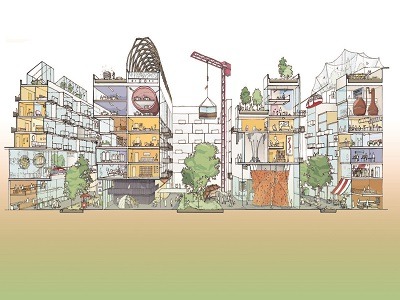
According to TechSci Research report, “Agritecture Market - Global Industry Size, Share, Trends, Opportunity and Forecast, 2016-2026”, The global agritecture market has a potential to project an impressive CAGR toward forces growth in the period, 2022-2026, on the account of growing adoption of environment friendly plant production and agricultural practices. Surge in the demand for the aesthetic plants like succulent plants, ornamental plants, grunge plants, etc. is further driving the growth of the global agritecture market in the upcoming five years. Also, unprecedented growth of global population has demanded for more residential infrastructures and the possibility of incorporating agricultural practices with modern ideation in the new building construction is further supporting the growth of the global agritecture market in the next five years. Agricultural practices in used warehouse, skyscraper, or shipping containers are new age techniques of incorporating agriculture with infrastructure architecture designing which is aiding the growth of the global agritecture market in the future five years. Moreover, increasing demand for urban agriculture is also substantiating the growth of the global agritecture market in the forecast years, until 2026.
Furthermore, high cost of involving technologies for the prolong sustenance of these agricultural practices might hinder with the future growth of the global agritecture market in the future five years.
Browse over XX market data Figures spread through 110 Pages and an in-depth TOC on " Global Agritecture Market"
https://www.techsciresearch.com/report/agritecture-market/8082.html
The global agritecture market is segmented on the basis of integration, structure, application, competitional landscape, and regional distribution. Based on integration, the market is differentiated between indoor, and outdoor integration. Outdoor integration is anticipated to hold the largest revenue shares of the market and dominate the market segment in the upcoming five years on the grounds of increasing demand for the environment friendly systems being incorporated in the various infrastructure. Moreover, idea of green buildings is further supporting the growth of the global agritecture market in the next five years. Also, lack of agricultural lands and demand for introducing agricultural practices in the corporate buildings, governmental building is further substantiating the growth of the global agritecture market in the future five years. Indoor integration is anticipated to register significant growth in the upcoming five years on the account of advancing technologies being incorporated in the vertical farming practices. Technologies like LED technology, hydroponic practice, are sustaining the market growth. Also, indoor farming practices protect crops from extreme climatic conditions with controlled environment agriculture technology, using artificial environment control systems, artificial lighting, and fertigation, thus aiding the growth of the sub-segment as well as the growth of the global agritecture market in the forecast period, until 2026.
Based on application, market is further fragmented into residential and commercial applications. Commercial applications of agritecture are anticipated to dominate the market and hold largest revenue shares of the market due to increasing demand for utilizing corporate infrastructure for added agricultural practices. Furthermore, depleting environmental conditions and concerns toward increasing carbon dioxide levels and depleting oxygen levels are influencing the growth of the sub-segment and growth of the global agritecture market in the future five years.
Some of the market players, dominating the global market are :
Agritecture Consulting LLC
AeroFarms LLC
Obyashi Corporation
Freight Farms, Inc.
Grow Pod Solutions
LettUs Grow Ltd.
FarmBox Foods
These market players along with new market entrants, are focused on extensive research and bringing innovative and advanced products. Technologically advanced manufacturing of the agritecture systems would aid in decreasing the cost of the production and aid the players in managing their investments. Moreover, initiatives from the government and private fundings would support the global agritecture market growth indirectly.
Download Sample Report @ https://www.techsciresearch.com/sample-report.aspx?cid=8082
Customers can also request for 10% free customization on this report.
“North America region is anticipated to dominate the global market analysis on the grounds of most of the researches based on agriculture practices and incorporation of agriculture designing with innovative infrastructure thinking, being conducted in the larger economies like the United States, and Canada. Also, the rapidly increasing market players in the region are supporting the growth of the global agritecture market in the upcoming five years. Additionally, increasing advancement of technologies like hydroponics, LED lighting, etc. that are further supporting the growth of the global agritecture market in the next five years. Moreover, lack of agriculture land due to increased industrialization is further substantiating the growth of the global agritecture market in the future five years. Asia Pacific region is also anticipated to register significant growth in the consecutive five years in future on the account of sudden increase in the population accounting for higher demand for residence and decreasing crop lands,” said Mr. Karan Chechi, Research Director with TechSci Research, a research based global management consulting firm.
“Agritecture Market - Global Industry Size, Share, Trends, Opportunity and Forecast, 2016-2026, Segmented By Therapy Type (Hormone Therapies, Monoclonal Antibodies, Signal Transduction Inhibitors, Gene Expression Modulators, Apoptosis Inhibitors, Others), By Disease Indication (Lung Cancer, Breast Cancer, Colorectal Cancer, Leukemia, Melanoma, Lymphoma, Others), By End User (Hospitals & Clinics, Cancer & Radiation Therapy Centers, Academic & Research Institutions), By Region”, has evaluated the future growth potential of global agritecture and provides statistics & information on market size, structure and future market growth. The report intends to provide cutting-edge market intelligence and help decision makers take sound investment decisions. Besides, the report also identifies and analyzes the emerging trends along with essential drivers, challenges, and opportunities in global agritecture market.
Contact
Mr. Ken Mathews
708 Third Avenue,
Manhattan, NY,
New York – 10017
Tel: +1-646-360-1656
Email: [email protected]
Web: https://www.techsciresearch.com
0 notes
Photo
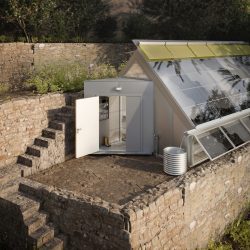
(via Studio Sotnas – a f a s i a)
0 notes
Text
Agritecture and CEAg World Announce Partnership for Largest CEA Census
Key Takeaways Agritecture and CEAg World partner on the world’s largest Controlled Environment Agriculture (CEA) Census. The fourth annual CEA Census focuses on technology and gathering global industry data. Findings will be presented at the CEAg World Conference & Expo in August 2024. Participants will receive free access to Agritecture Designer software and will have a chance to win conference…

View On WordPress
0 notes
Text
Urban Agriculture Blog Feed — AGRITECTURE
Turning to Innovation: The Impact of Machinery on Sustainable Farming November 11, 2024 Explore how advanced tools empower farmers to boost yields sustainably, using precision machinery, eco-friendly tech, and smart farming innovations. Read More → Source link
0 notes
Video
vimeo
Considering an indoor farm project? Check out this amazing tool from the people at Agritecture Consulting
3 notes
·
View notes
Link
13 notes
·
View notes
Photo

The #Father of Vertical Farming and internationally renown #expert and #author of The Vertical Farm Dr. Dickson Despommier has forever changed our world and #agriculture for the better. Thank you Dr. Despommier for igniting what has become a world wide revolution in agriculture. You have elevated global awareness of #indoor #verticalfarming, #hydroponics, #aquaponics, #aeroponics, and #carbonfarming. We are humbled and honored to be featuring you on the first season of our show! A special thanks to our friends at @agritecture who lead the industry advising and #consulting vertical #farmers and #leaders in this #agricultural #revolution. #grs #theverticalfarm #drdicksondespommier #dicksondespommier #agritecture (at Agritecture)
#father#expert#author#agriculture#indoor#verticalfarming#hydroponics#aquaponics#aeroponics#carbonfarming#consulting#farmers#leaders#agricultural#revolution#grs#theverticalfarm#drdicksondespommier#dicksondespommier#agritecture
0 notes
Photo
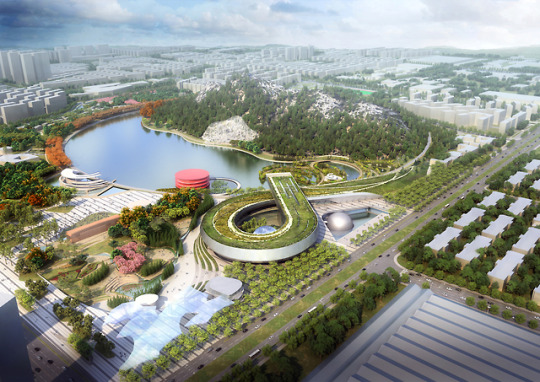
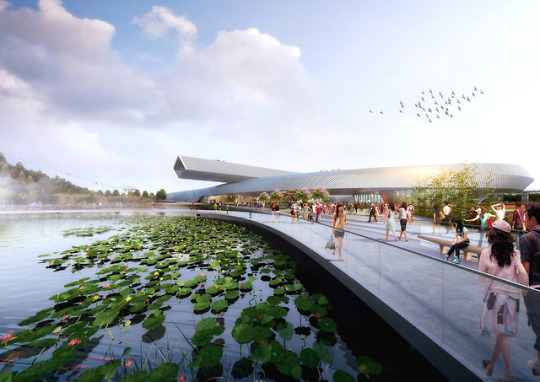
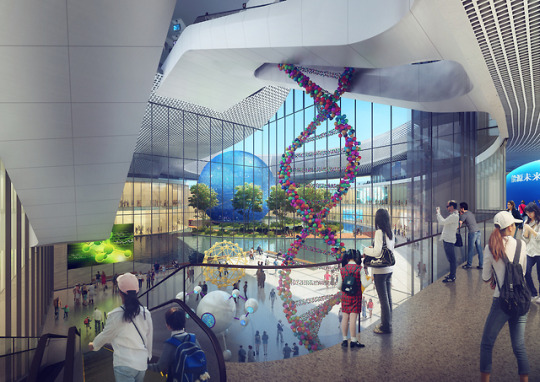

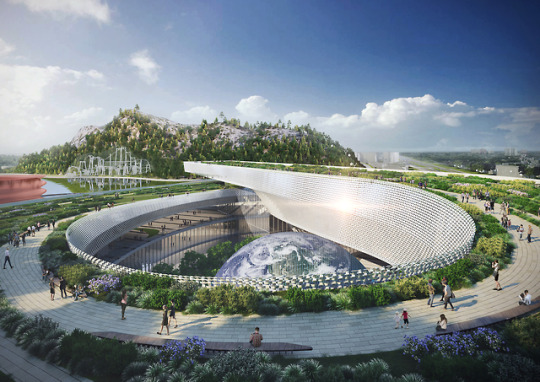
Perkins+Will is Creating a Whole New World for the Suzhou Science & Technology Museum
Snippet: Complete with terraced landscapes, civic plazas, eco islands, and surrounding forest, the design is much more than just a museum. Many visitors will enter through Discovery Court, a sustainable plaza with permeable paving, bioswales and reflecting pools. On the lake, eco islands are connected by a walkway leading to the museum. The eco islands act as a filtration system for the lake and feature exhibits on water purification, storm water management and sustainable living. The heat island effect is mitigated by the building’s green roofs.
Read the full article here on Arch Daily
Images courtesy of Perkins+Will
#Perkins+Will#Green Roof#Green Museum#Science#Storm Water Management#sustainable#eco islands#terraced landscapes#forest#bioswale#permeable paving#water purification#green architecture#agritecture#biotecture#China#Suzhou Science & Technology Museum#Suzhou
0 notes